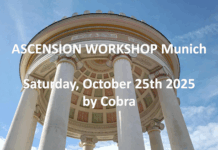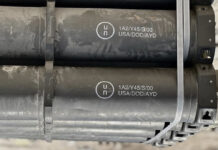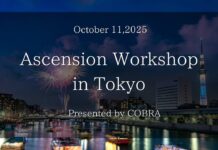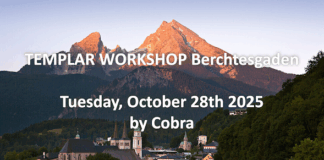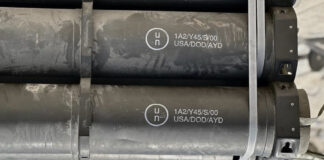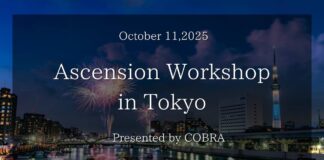By Elaine Buxton…..
What is Cancer, Maintaining a Positive Mindset & Healing from Within, Types of Cancer Care.
Cancer is the second most common cause of death in the United States and threatening to overtake cardiovascular disease as number one. It is being reported that 50% of people will experience cancer in their lifetime and have a family member with cancer. This article will discuss the impacts of being diagnosed with cancer, how to live to live with a positive cancer mindset, and how to access a very complex healthcare system for treatment. It is vitally important to be knowledgeable about cancer in order to advocate for oneself or a loved one.
What Is Cancer?
Cancer begins with normal, healthy cells that become converted into abnormal malignant cells in Six Principle Ways described below. Cancer cells function under their own rules, rather than being regulated by the body. The cancer cell wants to survive at any cost, and no longer recognizes that its life cycle includes death, isolates itself in tumors, and disrupts communication with other cells.
1. Cell growth
2. Sensitivity to tumor suppressor genes
3. Apoptosis (programmed cell death)
4. Replicative potential
5. Angiogenesis (formation of new blood vessels)
6. Metastasis (ability to spread to distant sites)
Cancer cells have their own independent growth signals compared to normal cells, which are reliant upon signals from the body in order to grow and divide. Cancer cells stimulate themselves to grow and multiply and are insensitive to anti-growth signals from the rest of the body. Normal cells have tumor suppressor genes, which restrict their growth. An important suppressor gene is called P53 and is known as the guardian of thegenome. Cancer cells have altered tumor suppressor genes, which means that stop growth signals are inactivated. A protein called Galactin 3 shuts down P53 when it attaches to cancer cells.
All normal cells undergo programmed cell death, called apoptosis, to protect the body from mutations and damage. They also have a pre-determined number of times they can undergo cell division before dying. Cancer cells do not undergo cell suicide and can divide and replicate indefinitely.
Normal cells are restricted by the availability of nearby blood vessels that supply nutrients. In contrast, cancer cells have the ability to promote angiogenesis, which is the formation of new blood vessels. Cancer cells use this additional blood supply for nourishment to grow and spread.
The sixth hallmark of cancer cells is that they can invade nearby tissue and spread to distant sites, a process known as metastasis. Changes in cell metabolism that promote growth, proliferation, and cell survival are altered by cancer cells in signaling pathways such as MAPK, P13K and mTOR, among others. Cancer cells also release substances that carry messenger RNA from genes involved in cell migration and metastasis to other cells. Metastasis is a complex process and a focus of research.
A healthy immune system is adept at fighting off infections, including viruses, bacteria, and cancer cells. The immune system recognizes these as foreign to the body and creates antibodies, white blood cells, and lymphocytes that kill these organisms. This requires that the body recognizes abnormal cells in order to eliminate them. Unfortunately, cancer is remarkably good at cloaking itself and hiding from the immune system; thus how strong or weak an immune system is does not necessarily provide full protection against cancer.
A lot goes into training our immune system to target and fight specific unwanted pathogens and antigens. Immune white fighter cells (leukocytes) are exposed to antigens in the lymphatic system, becoming lymphocytes. Antigens are structures on the surface of pathogens, recognized by trained immune cells for attack. Cancer cells, however, are largely devoid of foreign antigens. There is nothing protruding from a cancer cell to signal the immune system that it is bad. It is technically self and with only a few exceptions the immune system recognizes no distinction between a cancer cell and a normal cell. So once a cancer has begun, there is no easy way to reverse the process. Cancer simply must be killed. Ultimately, our immune system is unable to fight cancer the way it fights infections or other diseases. This is why a healthy immune system is not a complete answer to curing cancer.
The last few decades of research have centered largely on viewing cancer as a genetic disease. Mutations in the genetic material can trigger the formation of cancer as a result of damaged DNA. But even more important is what causes those genetic mutations to begin with. Furthermore, the best data suggest that only 6 to 8% of all cancers are genetic in origin.
Certain inherited genes have a correlation to the development of particular cancers, such as the BRCA 1 and BRCA 2 genes in breast and ovarian cancers. However, the presence of these genes does not guarantee that one will develop cancer. It is salient to realize that genetic mutations that are passed through families and increase the risk of fancier of cancer are still likely the result of some previous toxic insult to the genetic material. In other words, the breast cancer a woman experiences possibly started with an induced mutation incurred by her grandmother that was subsequently passed down.
It is known that environmental factors play a role in the cause of 92 percent of cancers. This can be thought of as a toxic bucket. Every individual has a different sized bucket or toxic bombardment during their lifetime. There likely exists a threshold at which point our cells cannot sustain the damage and succumb to cancer. We are surrounded by chemicals, with a rapid increase since WW II. It does not take a statistician to realize that as the volume of chemical exposures has increased, so have cancer rates. The correlation certainly seems probable.
Some of the ways we are exposed is through carcinogenic agents include cigarettes, asbestos, ionizing radiation, plastics, chemtrails, pesticides. The list is endless. Glyphosate, for example, has been widely used on crops since the 1970’s. Repeatedly told that it was safe, the WHO designated it as carcinogenic to humans in 2015.
Cancer is not exclusively the result of man-made influences, although it can be argued that man-made influences play a very significant role. We know that there are natural forces in agents that have a proven ability to cause cancer. Cancer has existed for millennia, something autopsies of ancient Egyptian mummies revealed. Among these are ultraviolet light from the sun. Stress, toxic lifestyles, genetic predisposition, are more examples of natural factors.
The science field of epigenetics has proven how stress, what we think, and our emotions effect gene function. Lifestyle, diet, and exercise play important roles that create the internal cellular environment as well. A premise of epigenetics is that the expression of certain genes is contingent upon a wide variety of external factors. A result of the stressors mentioned above is that the cell membrane becomes inflamed. Excessive, chronic inflammation is a significant physiological process leading to disease. Cells that are inflamed become weaker, do not create as much energy, and fail to perform optimally.
Once a normal cell reaches its capacity to function, it has a choice of apoptosis (cell death) or altering its mechanisms and genes in order to survive. Here the cell loses its predetermined lifespan or makes a crossover from a normal cell to a malignant cell. It is at this point where the cell’s genetic material is altered.
Cancer as a Metabolic Disease
In this view, cancer is more of metabolic disease than a genetic one. Metabolic processes are how cells produce energy (ATP). Dr. Otto Warburg (1883 to 1971) won a Nobel Prize in 1931 in Physiology Medicine for discovering the way cancer cells make energy. Dr. Warburg wrote that healthy cells are very good at producing ATP, typically producing around 32 to 36 units of ATP in a metabolic process called respiration by the mitochondria in the cells.
Cancer cells cannot do that and use a different metabolic process known as glycolysis. It can occur in both aerobic and anerobic (without oxygen) states. During glycolysis, a cancer cell burns sugar for energy but only produces 2 units of ATP. Glycolysis is a more primitive way of cells making energy and is very labor intensive. It’s an important distinction between normal healthy cells and cancer cells.
Dr Warburg was convinced that the damage to cellular metabolism was at the root of cancer development. This is essentially what we see when cells ultimately reach their threshold of inflammation and mutate in order to survive. Once a cell becomes overburdened in a toxic environment, whether the factors that lead to that inflammation threshold are natural agents, man manning agents, or stress induced agents, its energy protection is compromised and the cell mutates in order to survive. The fatigue that usually accompanies cancer makes sense in light of impaired energy production.
In addition to discovering that cancer cells preferentially consume glucose for energy, Dr Warburg realized that cancer cells do not thrive in oxygen rich environments. Hypoxia, or lack of oxygen contributes to the creation of cancer cells. Another important metabolic feature of cancer is that cancer energy production in a hypoxic environment produces a significant amount of lactic acid as a waste product. That is why we see a lot of acidity in and around cancer cells and one reason why many talk about the importance of PH or alkalinity versus acidity when it comes to cancer.
Unfortunately, much of Dr Warburg’s work was cast aside, despite the fact that it was fundamental to our understanding of cancer. Instead, much of the interest in treating cancer was diverted to chemotherapy in the 1940s and then genetics in the latter half of this 20th century. In recent years there has been a revived academic interest in Doctor Warburg’s work. Integrative oncologists, in particular over the last two decades, believe that cancer is largely a metabolic disease. This opens the door to many new approaches for successfully treating cancer.
The Stress-Cancer Connection
The well-known physiological effects of stress on the body supports the likely causal mechanisms of stress-cancer connections, including
· Suppressed immune activity of T lymphocytes and natural killer cells trained by the thymus gland. These cells identify and remove malignant cells.
· Mitochondrial dysfunction. Fragments of mitochondria have been found in the blood following acute stress.
· Elevated natural glucocorticoids (steroids) following chronic stress aids angiogenesis and raise blood glucose levels, the primary fuel used by cancer cells.
· Altered DNA repair and apoptosis
· Systemic inflammation with elevated expression of cytokine interleukin-6, detected in epithelial tumors.
· Altered tumor-suppressor proteins and genes
Survey polls in the US reveal that one of the most common sources of stress is healthcare. This includes the ability to access care and pay for it. Many people find themselves in precarious financial situations related to health care expenses, disability or job loss after major health status changes. Medical bankruptcy, especially with a cancer diagnosis, unfortunately is not rare due to the limitations of health insurance. For example, holistic therapy costs, deductibles, co-pays and insurance payments accumulate quickly. Therefore, the cancer patient must weigh the cost and benefits of care. Furthermore, several small and rural communities usually offer fewer healthcare options.
Another source of stress can be a lack of very important emotional support offered by family members. There may be no family members available locally, broken family systems, or disagreements on the type of intervention sought. Spouses tend to get hit hard with the strain of the patient’s diagnosis, burnout from caregiving, and grief. Thus, surrounding oneself with positive, non-judgmental and affirming people can sometimes be challenging. The cancer patient who is isolated or retreats inwards will generally have a more difficult journey.
Emotional Reactions to a Cancer Diagnosis
An initial cancer diagnosis usually brings emotional reactions of several types. It may bring feelings of shock, numbness, hopelessness, anxiety, or despair. The diagnosis can blindside otherwise healthy people who are instantly transported from a normal healthy life into a valley of the shadows of illness. Other people realize that about half of cancers are small and detected in early stages, and so can be cured. Then it can become a bump in the road to overcome that just must be accepted as part of what life brings verses a heroic challenge. Challenge responses might include learning as much as possible about cancer treatment, exploring the multiple types of healers and herbal supplements, beginning mind-body practices, or facing each step of the journey with courage. A few people may go into a denial response.
Cancer is not just a lump in your body that can be cut out or killed easily with drugs, radiation, or surgery. It alters every aspect of your life. Fighting cancer must be done on physical, psychological, emotional and spiritual levels. Cancer confronts each person with the will to live or not. It is the will to live that enables us to meet the challenges of illness, survive and grow in spite of the obstacles.
A number of studies have shown that people with cancer do learn to adapt and cope with the cancer in positive ways that contribute to a sense of well-being and improve their survival chances as well. There is strong evidence that how people respond to their cancer over time on psychological levels influences the physical disease itself.
It is normal for fears to come up. Fear can mobilize a person to get help, but if too strong can overwhelm them with anxiety, loss of sleep, loss of enjoyment and depression. Cancer has four distinct fears associated with it.
§ Fear of death and thoughts of mortality with a diagnosis of metastatic disease or aggressive cancers, confirmation of relapse, or unresponsiveness to treatment.
§ Fear of side effects from conventional treatment. Do no harm undermined by aggressive cancer killing goals. We have all seen the emaciated, pale, hairless patient left broken by chemotherapy.
§ Fear of the unknown when relapse follows remission.
§ A combination of the fears listed above – cancer itself, its treatment, and dying.
Maintaining a Positive Mindset and Healing from Within
Ideally, all healthcare decisions funnel into what best supports healing from cancer while maintaining or improving the quality of life. Wise doctors and other providers consider the coping skills of the cancer patient as to how they handle the inevitable fears and stress. Who that person is and their circumstances do make a difference. For example, it is important to know whether or not the person has underlying feelings of being helpless or overwhelmed preceding the diagnosis and any other strong emotional conditions. Does the cancer patient come from a background of feeling safe and loved?
How likely will the individual be able to find a way to become a stronger person versus becoming a victim of the disease? For a person with a personal growth mindset, cancer can be a wake-up call to evaluate if their life is out of balance and if they can improve with healthy self-care measures. This can lead to personal empowerment in the process of coming to terms with one’s own mortality. Having a vision of something to live for, but not necessarily a future without cancer, is essential for a positive mindset, willingness to accept the hand that has been delt, and maintain resilience.
What does it take to become whole again after health status declines?
Giving into temptations of regret and sorrow leads to dark days following the cancer diagnosis. Instead, focusing on participating in life instead of what has been lost is a way to view cancer from a different lens. Mediating stress makes the difference between falling victim to the suffering or being alive with empowerment.
Cancer can be seen as an opportunity to create a vision for the self as a whole, healthy, empowered individual. It must be done on a day-to-day basis of commitment to living an anti-cancer lifestyle. As a cancer patient, your job is to be the person whose takes all the available odds into your favor for deep and lasting healing. A peaceful coexistence with cancer is the goal, led by a positive mindset for the journey.
There is abundant research showing that happiness and compassion affect the nervous, circulatory and immunity systems and much more. The more our hearts and minds can understand that we are part of a bigger collective, the happier and healthier we will be as individuals. When it comes to cancer, this also means being loving and compassionate with ourselves. Perceiving the heart as a multi-dimensional organ with physical, emotional, and psychological functions, can be transformative as it cares for itself as well as others. We need to nourish and love ourselves.
The heart radiates 100 times more magnetic energy than the brain, extending several feet beyond the physical body. The heart has a profound effect on our entire body and also in the space around us. True healing requires deep examination of what we think about ourselves, as it is connected to root causes of disease.
We are what we think and speak. Words are powerful. This is why affirmations, guided meditations instructing the body for healing, the Emotional Freedom Technique (tapping), yoga and self-hypnosis are excellent methods for inner healing. According to New Age teachings and Chinese medicine, thoughts create reality. However, it must also be kept in mind that while mindset is a powerful way to connect with your body, it is best combined with physical strategies. This is because it is not possible to think your way out of a terminal disease, just like you cannot think your way out of a healthy diet or nutritional deficiency.
Conventional medicine may reveal remove physical cancer cells, but mindset is what provides the deep holistic healing. The lesson of stress is to find meaning, rather than to avoid discomfort. Humans survive because of our ability to adapt to change. Stress and challenges provide the stimulus to grow stronger. Stress is not totally positive or negative in a black and white manner. There are plenty of stressors that don’t kill us but rob us of a happy life in which we become tired, depressed, sleep depressed, or overwhelmed. This can weaken our resolve to make good lifestyle choices or lose a sense of purpose without intentional efforts made to create and maintain a positive outlook.
Types of Cancer Care and Treatment
In cancer care there are two complementary goals of treatment. One, the usual medical goal, is to kill cancer cells and tumors, or reduce their numbers and their ability to grow, reproduce, and metastasize. The other, best perhaps best called the healing goal, is to support the well-being and resilience of the patient.
Conventional medical care for cancer has for many years concentrated on destroying tumors without paying much attention to supporting the patient as a whole person with innate healing capacities. Until recently, most people put themselves in the hands of an oncologist and did what they were told. While you were most certainly need a good oncologist to prescribe and monitor your medical treatment, there is much more needed to survive in cancer.
There are two main branches of oncology: conventional medicine, also referred to as allopathic, Western or modern medicine and integrative medicine, also referred to as complementary, natural or holistic medicine. A third type of care is alternative therapies, used instead of conventional and integrative medicine, usually comprised of natural remedies. This is in contrast to integrative care that offers a combination of both conventional and naturopathic therapies.
Even though most people will be in a vulnerable emotional state during the first three weeks or so after the initial diagnosis of cancer, important decisions are made regarding who to consult for primary care of the cancer. This does not mean having knowledge of all the specific types of treatment eventually taken over the course of care, nor the ongoing learning about cancer and the emotional and cognitive adaptations that accompany treatment. While consulting at least two different potential primary sources of primary cancer care is beneficial, keep in mind that early provider choices often heavily influences the longer treatment path.
More than 30 percent of chemotherapy patients prematurely quit treatment because of emotional difficulties and many more due to toxic side effects. Fatigue, chemobrain, anxiety or depression, immune suppression (low white and red blood cell counts), neuropathy (nerve damage), nausea, hair loss, and diarrhea or constipation are common side effects of chemo. Chemotherapy is palliative for metastatic cancer, not curative. Chemo does not kill cancer stem cells or what is known as circulating cancer cells. Therefore, other therapies will usually be necessary, including surgery, radiation or immunotherapy as part of conventional oncology.
Conventional Medical Oncology
Conventional medical oncology, also known as the standard of care is evidence-based and is backed by years of large, rigorous, double blinded, placebo controlled, random research studies. Because of the enormous cost of these studies, often funded by Big Pharma, many therapies supported by smaller studies or using natural products that cannot be patented never become accepted into the protocols by mainstream American providers and insurance. Big strides have been made in the development of drugs, radiology, and surgical procedures in the past two decades but the survival numbers for particular cancers remains largely unchanged.
First-line protocols for cancer treatment have been well established, allowing patients to be treated quickly using flow chart, cookbook, and one size fits all approaches. Second-line protocols are also established if the first-line treatments fail. This is very efficient, but lacks any degree of personalization and unique tailoring of treatment or dose reductions for each patient.
A medical oncologist will discuss the patient’s prognosis and recommendations for chemo, radiation or surgery. They will prescribe side effect medications for nausea, potential allergic reactions, bowel changes and pain. They will set up a schedule for treatments and follow-up lab and visits. They will refer the patient to a nurse for education about the chemo infusions. It is unlikely the oncologist will talk about nutrition, other than advice to avoid weight loss. They will probably not talk about diet, exercise, or stress management. At the cancer center where I am treated, ER referrals are made for most side effect management other than the above.
Integrative Oncology
Integrative oncology utilizes a combination of standard of care and evidence-based therapies from the alternative, naturopathic, herbal, nutritional, Chinese medicine and Ayurvedic realms. Providers include MDs, DOs, Naturopathic Doctors, Nutritionists, and Acupuncturists. Diagnostically it uses similar lab, biopsies, imaging and cancer staging. Treatments may include chemotherapy but often at much lower doses in combination with herbals and supplements to increase efficacy and lower side effects. Surgery is still viewed as a critical step for good candidates.
There are several differences from between integrative and conventional medical oncology as follows:
· Goals in fighting cancer have two main fronts – 1) killing, shrinking or removing tumors and 2) decreasing the systemic burden of cancer from circulating tumor cells (CTCs) and cancer stem cells (CSCs) that are found in the bloodstream and not killed by conventional treatment. These cells are released into the bloodstream well before tumors are detectable and are responsible for relapses following remission.
· Cancer is viewed as a metabolic disease that needs to be treated on a cellular energy level.
· Treatments are added that alter the “terrain” or environment which allowed the cancer to grow in the first place.
· Treatments that are evidence based but have not been studied on the scale necessary to make it into mainstream conventional protocols.
Jonathan Stegall, MD in his book, Cancer Secrets, explains the benefits of low dose, fractionated chemotherapy.
With full dose chemotherapy, there is a large window of time between the administration of the initial treatment and the subsequent treatment. Typically, patients will receive treatment once every 1 to 3 weeks, depending on the chemotherapy chemotherapeutic agents used, the type of cancer, and the stage of cancer. With this method, side effects frequently occur, including immune system suppression, anemia, low platelets, nausea, vomiting, diarrhea, and fatigue, among others. Administering full dose chemotherapy more often than this would likely cause even more terrible side effects.
During that window of time between chemotherapy treatments, however, you give cancer cells that survive the treatment (and plenty will) the opportunity to build resistance to the drug. These resistant cells are then able to use nutrients and other factors to aggressively grow and thrive. This is why we often see a reduction in tumor size and cancer markers during the first few cycles the full dose chemotherapy, but aggressive recurrence of the cancer in the months that follow. Unfortunately, the success scene in those early cycles is nearly impossible to maintain, as subsequent chemotherapy treatments against the remaining resistant cells provide little to no results.
A strategy which administers lower doses of chemotherapy more frequently has been developed. Known as fractionated metronomic chemotherapy. Because the doses used each time with metronomic chemotherapy is less or fractionated the side effects are greatly mitigated if not nonexistent, and the collateral damage to healthy cells is also greatly reduced. Another advantage of using lower doses of chemotherapy is that it has an anti-angiogenic effect, meaning that blood supply to the cancer is decreased. Not surprisingly such an approach was also found to greatly reduce toxicity.
Dr Stegall incorporates Insulin Potentiation Therapy (IPT) into fractionated metronomic chemotherapy. Insulin and fasting are used to lower blood glucose temporarily to starve the tumor and activate dormant tumor cells at the time of chemotherapy. This is based on the premise that chemo is only effectve against actively dividing cancer cells and activation with insulin increases the number of vulnerable cancer cells. Fractionated chemotherapy has also been shown to reduce angiogenesis that feeds cancer cells. The challenge of using IPT is that there are no large-scale clinical trials evaluating its efficacy. Although IPT is not yet considered a standard of care, it has been used by oncologists since the 1930s, first developed in Mexico by Dr. Donato Perez Garcia. It is believed that IPT affects the metabolism of cancer cells, making them more sensitive to chemotherapy agents. Insulin is just one of many existing drugs that could be used for off-label cancer treatments.
Closing Thoughts
The above information is some of what I would have found helpful to understand early on in my personal cancer journey. Hopefully my readers do as well in advocating for themselves or for a loved one. There is so much more that could be written. Let me know if you have questions or leave comments. And please like and subscribe, as it keeps me motivated to keep writing for a positive purpose.
Follow Elaine here: https://elainebuxton.substack.com/
Disclaimer: We at Prepare for Change (PFC) bring you information that is not offered by the mainstream news, and therefore may seem controversial. The opinions, views, statements, and/or information we present are not necessarily promoted, endorsed, espoused, or agreed to by Prepare for Change, its leadership Council, members, those who work with PFC, or those who read its content. However, they are hopefully provocative. Please use discernment! Use logical thinking, your own intuition and your own connection with Source, Spirit and Natural Laws to help you determine what is true and what is not. By sharing information and seeding dialogue, it is our goal to raise consciousness and awareness of higher truths to free us from enslavement of the matrix in this material realm.
 EN
EN FR
FR



